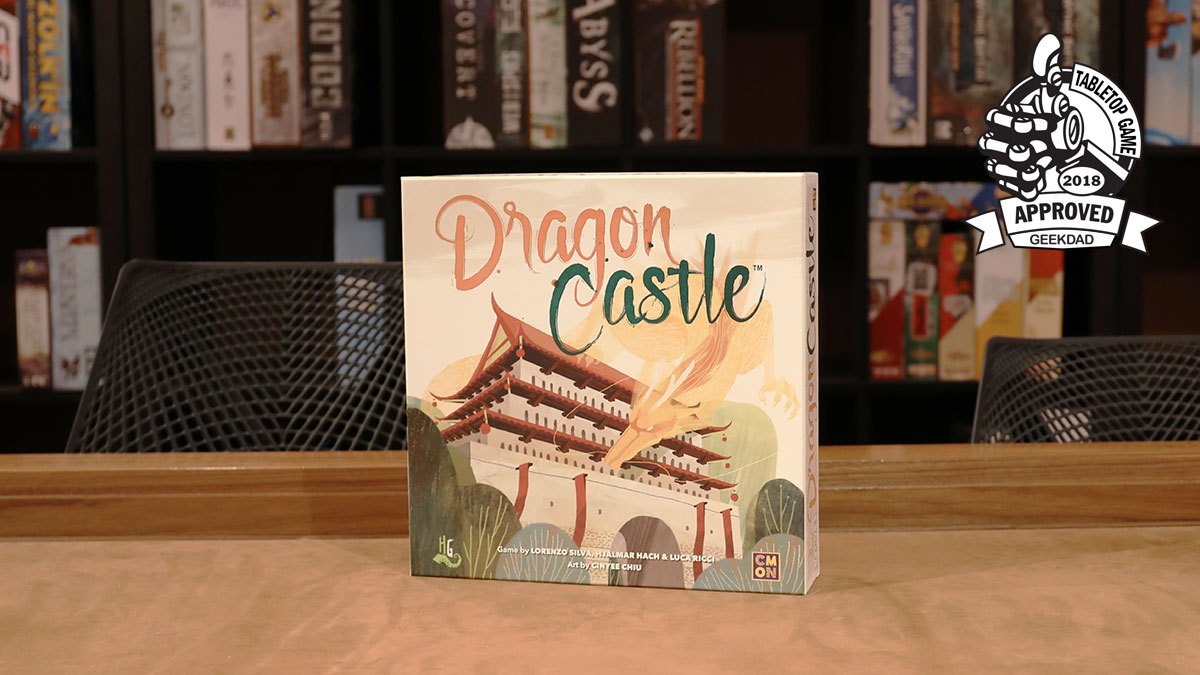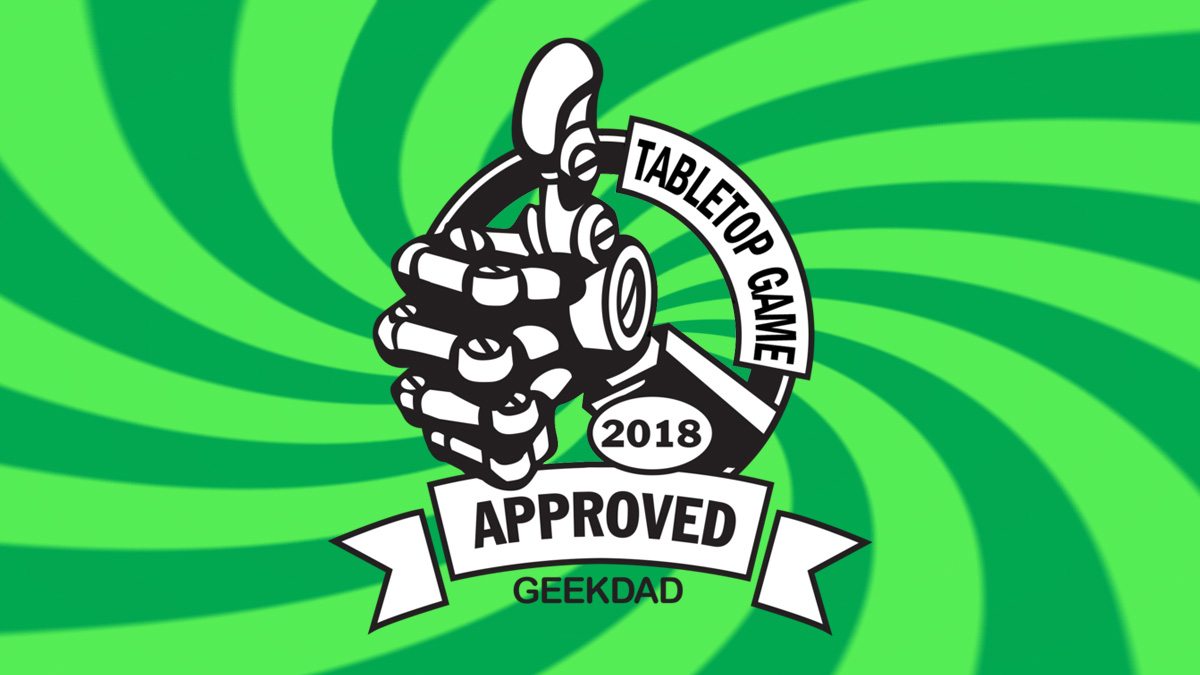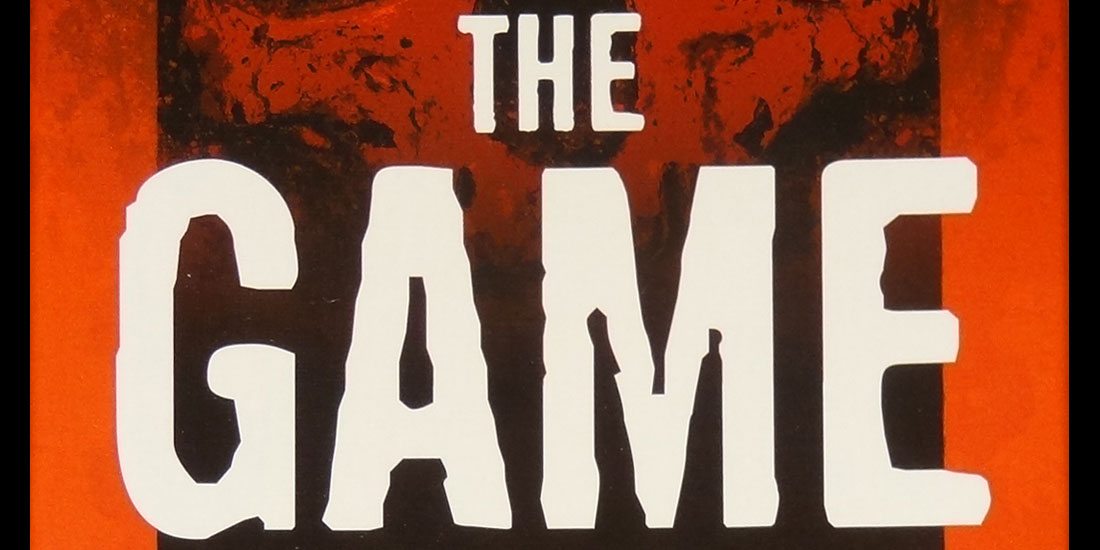What Is Dragon Castle?
Dragon Castle (official link) is a drafting and tile placement abstract strategy game for families with 2-4 players aged 8 and up. The CMON game plays in about half an hour. Inspired by Mahjong, Dragon Castle is a game that challenges players to take tiles from an ancient, crumbling castle and create their own castles to win the favor of the Elder Dragon! Happy building!
Dragon Castle Components
In the box, you’ll find:
- 2 Double-sided central boards
- 4 Realm boards
- 4 Player reference cards
- 10 Spirit cards
- 10 Dragon cards
- 85 Victory point tokens
- 40 Shrine roofs
- 7 Countdown tokens
- 1 First player token
- 116 Tiles (72 Faction tiles and 44 Special tiles)
First off, the tiles are really nice. They are undersized, compared to most Mahjong tiles, with their longest sides being about one inch. They are solid plastic and feel good in the hand. The printing on the tile is very well done and it seems like amazing quality, as the main component of a game that can be found today for about $40. The faction tiles are split into three groups—yellow merchants, red soldiers, and green farmers—each numbered from one to six. The symbology on all of the tiles is different, so the tiles should be OK for color blind players to play with.
The shrine roofs are also wonderful. They are made from molded plastic and are constructed so they can sit on top of a stack of Dragon Castle tiles. Missing are the gables you see on most Shinto shrines; rather they use a shia or pyramidal hipped roof. Nevertheless, they support the theme well.
Among the other bits, the victory point, first player, and countdown tokens are all good quality cardboard and the spirit and dragon cards are also of very nice. However the central and realm (player) boards leave something to be desired. All of these are printed on cardstock, very much like the player boards in Terraforming Mars. I suppose that printing on cardstock keeps the price of the game low and the weight of the game down, but, like the boards in Terraforming Mars, they feel lacking to me. The artwork on them is beautiful, as it is on the other cards as well. The realm cards are double-sided, but one side just has art, whereas the playing side has a grid and a place to store shrines. The central boards provide a variety of setups, depending on the number of players. In addition to being flimsy, depending on where you are playing, table or surface imperfections can easily be felt through these “boards.” They work though, and if you love the game, I suppose you can always make your own substitutes. (In the first game I ever played of Dragon Castle, we used some nice, neoprene boards that a gamer had picked up at Essen.)
Dragon Castle is GeekDad Approved!
How to Play Dragon Castle
Setup
Setting up Dragon Castle takes a bit of work, but with many hands, it goes quickly enough. The biggest challenge is setting up the tiles on the board. For your first few games, it’s recommended that you use one of the main central boards that ship with the game. After that, there are a dozen other configurations (with recommended player counts for each) in the back of the rule book—or you can come up with your own challenges.
Tiles are stacked, face-up, on the board with varying layers of depth, according to the board layout. Some stacks have three tiles, while others have just one. Shrines and VP tokens should be set within reach of everyone and countdown tokens should be placed on the board, according to how any players are in the game. More players means more countdown tokens. A single Spirit and Dragon card are each placed by the board. These provide a special power and objective available to everyone throughout the game. If it’s your first game, you may wish to skip these cards until you are familiar with the other mechanics.
Each player gets a Realm board and a single shrine to put in their shrine pool. Pick a player to start and you’re ready to go.

Gameplay
On each turn, a player must choose and complete one of four actions. A player can take a pair of available tiles, beginning with one on the top floor of the Dragon Castle on the central board. They must then take a second and identical available tile from any floor. This first action requires two very important definitions. First, an available tile is one on an outside edge of the castle that has a long edge completely exposed. The second, identical tile, means just that. “Really close” or “sort of looks alike” doesn’t cut it. They must be exactly alike to be identical.
The second action a player can take is to take a single available tile from the top floor and then take a shrine from the general pool. This shrine should be placed in your shrine pool. The third action is to pick and discard any single available tile from the top floor. In exchange, the player receives a 1 VP token. (VP tokens come in three denominations; keep them stacked so your competitors can’t tally your score.) Lastly, a player may summon the dragon. This ominous action only takes place at the end of the game. This action doesn’t really fit here, so I’ll describe it at the end of this section.
After you have taken your action, any tiles you’ve taken must be placed on your realm board. Tiles are placed face-up and can be placed anywhere on your diamond-shaped realm board. Placed anywhere, with a couple of limitations, that is. Tiles may be placed on an empty space or on any stack of face-down tiles. How do tiles turn face-down, you ask? This is where Dragon Castle gets puzzle-y and fun.
As mentioned before, there are six tiles types: 3 factions and 3 types of special tiles. Whenever four tiles from a single tile type are orthogonally adjacent, you must consolidate them. Consolidation means flipping the tiles face down and then scoring them. If you consolidated four tiles, it’s worth 2 VP. Five tiles earns 3, six gets 5 VP, 7 gives 6, 8 grants 8 VP, and each tile beyond that gives one more. It is worth noting that, while tiles that are diagonal do not qualify for consolidation, those on different floors do, so always be looking directly down on your realm board. To reiterate, they only have to be from the same type of tile, not identical faces.
When you consolidate, if you have any shrines in your shrine pool, you can add them to tiles you have just consolidated. (They can never be added later.) If the tiles you’ve consolidated are ordinary factions, you may add a single shrine. Special season and wind tiles that have been consolidated allow you to place two shrines if you have them and special dragon tiles allow two shrines to be placed in addition to the award of a 1 VP token. At the end of the game, VP are awarded for shrines placed and points are given based on which floor the shrines have been placed. First floor gets a point, second gets two, and anything on floor three and higher gets three points.
Once during your turn, a player may activate the spirit card, which grants a strong power. These vary in strength and which part of the game is benefited most by the power. However earning the favor of the spirits comes with a cost and anyone activating the spirit card must either discard a face-up tile from their realm board or a shrine from their shrine pool. The dragon card, as mentioned, provides another objective.
Play continues like this until the central castle is deconstructed to the point that only first floor tiles are left. As mentioned before, there is a fourth action a player can take on their turn—summoning the dragon, which will eventually trigger the end of the game. When only first floor tiles are available, this action may be executed by taking one of the countdown markers. Each token is worth two VP and a player can take more than one by summoning on successive turns. Beneath the tokens are symbols and, when the exclamation point is revealed (always second from the last token taken), the elder dragon has been summoned and the final round has begun.
Everyone gets one last turn, except the player who summoned the elder dragon, and VP are tallied. Most points wins!

Why You Should Play Dragon Castle
Dragon Castle is a ton of fun. It plays pretty quickly and, thanks to the randomness of setup through both tile distribution and central board setup, no two games will ever be the same. It’s pretty easy to teach and it’s good family fun. We liked that the game played really well without the Spirit and Dragon cards and half the time we choose to play without them and it’s still a very good time.
While you can play quickly, finishing a game in close to 30 minutes, it’s also enjoyable to go a bit more slowly. Taking a tile and then considering what has been revealed as a second tile can be rewarding. You can also pick strategically, to block the strategy of your opponents, although this may be met with some protest. When picking tiles, it’s important to be decisive though. We have a house rule that, if you take it, you can’t put it back. This was instituted because too often tiles were taken, minds were changed, and no one could remember where they had originally been on the central board.
Additionally, there are several strategies to consider. If you only pick pairs, you will never have shrines to give you end of game points. But shrines don’t award a lot of points, so are they worth over-pursuing? I’ve found that it’s more important to rack up large consolidation blocks than it is to concentrate on shrines (although they do look good). A solid second or third place in shrine scoring will easily keep you in the running.

There is a small downside in the game and that is when you pick tiles from the central board or flip tiles on your Realm board, it can be a challenge for big hands. In fact, time after time, Realm boards have to be partially deconstructed to flip interior tiles. It’s a minor complaint, but it still takes away from the overall experience. I don’t think there’s a workaround to fix it though. The components are a bigger black spot. The tiles and shrines are really fantastic, but the boards are awful. I haven’t played a first game with anyone yet who didn’t derisively comment on the boards. I’m willing to overlook it this time because the price of Dragon Castle is low and it’s lots of fun, but I really hope publishers stay away from the cardstock “board.” The upside is that they do make it easy to scoop up all the tiles when putting the game away.
I think what I like most about Dragon Castle is that it’s really two games. First, it’s something everyone can relate to in a game—matching objects. That’s a simple concept and one that just about everyone has played with at some point. But then the game introduces a second game, which takes place on the Realm board. As players try to piece together large swaths of tiles before consolidating them and adding shrines, it becomes a more challenging affair. All the while, it’s easy to grasp and introduces newer players to more difficult concepts. For that reason, I think Dragon Castle is one that can easily be added to my list of great gateway games.
CMON has had a few under-the-radar games lately, launched directly to retail with little fanfare, that I think are much better than their mini-heavy Kickstarter offerings. Last year’s Ethnos was incredibly fantastic and a game I will never say no to. Dragon Castle is a close second in that group and it’s one you should definitely try to play.

![]() To subscribe to GeekDad’s tabletop gaming coverage, please copy this link and add it to your RSS reader.
To subscribe to GeekDad’s tabletop gaming coverage, please copy this link and add it to your RSS reader.
Click here to see all our tabletop game reviews.
Disclosure: This game came is part of my personal collection.








